Any number of issues could loosen a tire, causing it to fall off while you are driving. Most of these incidents occur because of some kind of fastening failure. This could be because the lug nuts worked their way off, your wheel has broken lugs, or because the wheel studs themselves broke.
At Newsome Melton, our defective tire lawsuit lawyers understand what causes a tire to fall off while driving. If your tire fell off and caused a car wreck, we may be able to help you pursue compensation. Call 888-221-5316 today for a free consultation.
There are many reasons a tire may fall off while driving.
In addition to loose or broken lug nuts, there are other ways a tire could fall off while you are driving.
Broken Axles
When an axle breaks, it can fly off and take the entire wheel and tire assembly with it.
Hub Separations
If the bearing fails, or there is a problem with the axle/spindle nut and the hub comes loose, the hub and wheel can fly off.
In some cases, a tire service company, mechanic or auto dealer may cause or contribute to wheel separation incidents. If this happened to you and we can prove it, you may be eligible to recover compensation for your medical bills, vehicle repair or replacement, and other damages.
When a tire falls off, it can cause the driver to lose control and the vehicle may even roll over. This is especially true with trucks and SUVs, which are taller and already at an increased risk of a rollover crash. While any crash at highway speeds can be devastating, a rollover can lead to particularly catastrophic injuries.
In addition to the injuries people in the vehicle that lost a wheel sustain, the occupants of other nearby cars are also in danger. Loose wheels often fly into the air and bounce into other vehicles at speed. This can cause significant damage and injuries. Even when the wheel does not hit anyone else, it will likely land on the highway and become a difficult-to-dodge hazard that could easily cause other wrecks.
Loose wheels often fly into the air and bounce into other vehicles at speed. This can cause significant damage and injuries. Even when the wheel does not hit anyone else, it will likely land on the highway and become a difficult-to-dodge hazard that could easily cause other wrecks.
Because they are the only part of your vehicle that touches the road, your tires and wheels are under immense forces while you drive. If the nuts are weak or not installed properly, they can break or work themselves loose. Missing or loose lug nuts usually create a vibration, but sometimes there is little to no indication of a problem before the tire falls off completely.
When a fastening failure causes a lost wheel crash, it usually occurs within weeks of a service that required removing and replacing the tire. This could include:

Automakers have specific standards for the torque that a technician should apply to each lug nut to ensure it holds the tire in place but is not at risk of breaking. When most modern tire shop techs or mechanics remove and replace wheel nuts, they use an air wrench instead of a hand-powered torque wrench. This can involve several issues, including:
Your mechanic or tire technician should recommend using a hand-powered torque wrench to ensure your wheel nuts are tight after a few days’ driving following service. This ensures they will not work themselves loose and helps to avoid this type of problem. When service technicians fail to tighten lugs adequately, you may discover the issue early and avoid a crash.
In some cases, an automaker, dealership, mechanic, or tire shop may be responsible for the damages you suffered if a tire fell off a vehicle while driving. These cases are difficult to prove, but we work closely with survey teams, crash reconstruction specialists, and other professionals to build a solid case for our clients.
These cases are difficult to prove, but we work closely with survey teams, crash reconstruction specialists, and other professionals to build a solid case for our clients.
There are several ways negligence can lead to this type of incident. In some cases, defective parts can cause an issue. In others, a technician who worked on your car might have acted negligently while performing repairs. We can get to the bottom of this for you, identifying the liable party and holding the company accountable for its actions.
How Can I Talk to a Tire Failure Attorney About My Wheel Separation Incident?
Newsome Melton offers free case reviews and consultations for crash victims. If you believe a dealership or other service provider caused your wreck, we can help you understand if you have a valid case. You may be eligible for compensation to pay your medical bills, lost wages, pain and suffering, vehicle repairs, and other damages.
Call us today at 888-221-5316.
kezzie
1
6 months ago, one of my tires separated from the rim while I was driving. I’d gone less than half a mile from home. When I took it to the place that sold the tires, they told me aluminum rims did that a lot. Two days ago, the same things happened (on a different tire). I checked with people, and on the internet, and didn’t find many people talking about it so I thought there must have been something wrong with the way they mounted them (the only suggestion that made sense from the limited net information). I asked that they fix this one, and the two that haven’t separated, and refund the $25 they charged the first time. The owner said that I was wrong - it does happen all the time.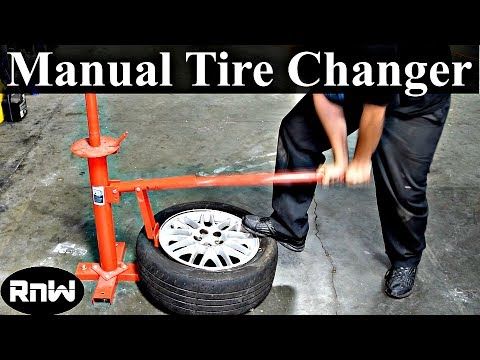 They suggest people come in every six months to have the seal checked or re-done. (This wasn’t something they told me when I bought them or after the first time). He also said that it happens especially in the cold when the air contracts in the tire.
They suggest people come in every six months to have the seal checked or re-done. (This wasn’t something they told me when I bought them or after the first time). He also said that it happens especially in the cold when the air contracts in the tire.
If this is true, why aren’t drivers up in arms?
VDCdriver
2
I am extremely skeptical of the tire shop’s statement, and I think that a much more logical explanation is very low tire pressure.
How often does the OP check his/her tire pressure?
Have temperatures been extremely low in your area recently?
Do you know what the pressure was in those tires just before they parted ways with the rims?
the_same_mountainbike
3
Maybe all the tires “the owner” mounts come off, but nobody elses’ do!
It is absolutely NOT ttrue that aluminum rims cannot hold tires.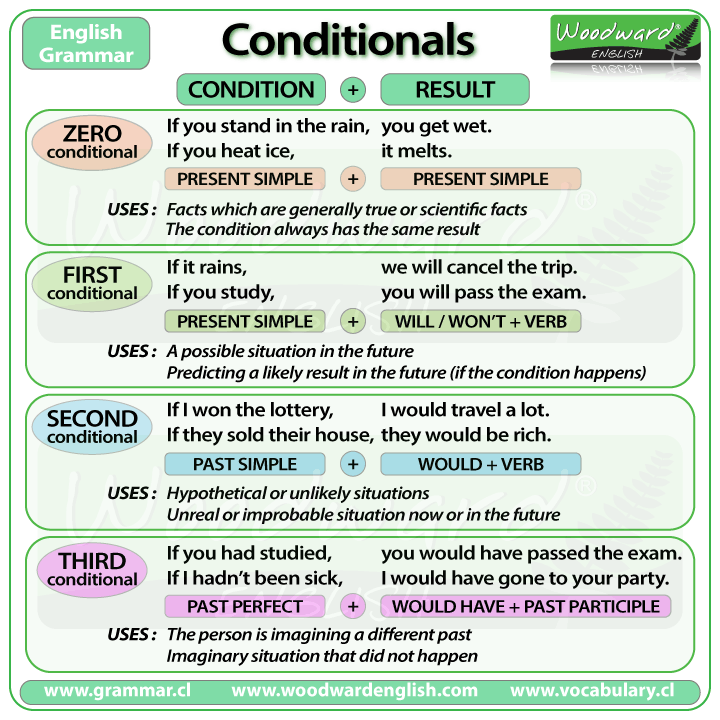 Either the guy that did the mounting didn’t know how to or didn’t bother to seat the beads properly or wasn’t knowledgable enough to know a tire-size/rim-size misfit. Either way avoid his shop forever. He clearly doesn’t know what he’s doing.
Either the guy that did the mounting didn’t know how to or didn’t bother to seat the beads properly or wasn’t knowledgable enough to know a tire-size/rim-size misfit. Either way avoid his shop forever. He clearly doesn’t know what he’s doing.
By the way, what’s he make, model, and mileage of the car?
Are these the original rims?
Do you know what size the rims are (in width)?
What size are the tires?
Do you check your tire pressures periodically?
lion9car
4
The tire place is lying or incompetent. What is the size of your current tires? What is the size of your OEM tires (probably listed in your owner’s manual or on the sticker in the driver’s door jamb)? I’m wondering if they installed tires that are too narrow.
jtsanders
5
+1
We need to know rim diameter and width, tire pressure, and all the tire dimensions.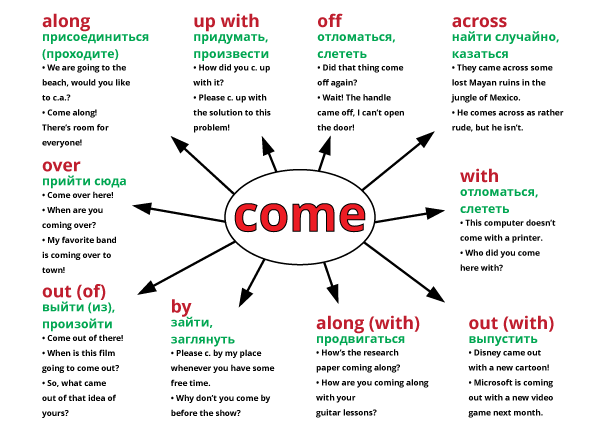
ken_green
6
We need to know the tire size…and the rim bead width.
I HAVE seen people try to squeeze a narrow tire on a wide rim…it can be done…but this is where problems are created.
It’s usually when they get fancy rims that are wider than o.e. and insist on forcing the o.e. tires on them thinking that all 16" rims are created equal.
Plus our low rides like to do that to get the tire even skinnier from the rim to the ground.
ok4450
7
What you were told by the shop is an utterly embarassing crock of BS.
The reasons why a tire can separate from a wheel rim are underinflation, tire size too narrow or even too wide for the wheel rim, or a tire of too large an inside diameter being mated to one of those oddball wheel rim sizes. (Regarding the latter; a 17" tire on a 16.5" wheel rim, etc.)
(Regarding the latter; a 17" tire on a 16.5" wheel rim, etc.)
ken_green
8
kezzie ,
Do you take any corners about as fast as humanly possible ? ( even ‘‘low speed’’ neighborhood street intersections )
That’ll do it too.
kezzie
9
We have had low temperatures, but no one else’s tires have done this. I usually ‘check’ air pressure by looking to see if any of the tires look like they’re not as full as the rest - so they might be a little low when they come off, but they’re not obviously going flat. The car is an 1996 Acura 3. 2. I don’t know whether the tire size is correct (and I’m sorry, but it’s cold out there - I don’t particularly want to get down on my hands and knees to read the tire size - but I will when I take them back to this guy who’s going to 'see if there’s a problem with the rims" . And no, I don’t try to be a race-car driver, whether highway or dirt roads.
2. I don’t know whether the tire size is correct (and I’m sorry, but it’s cold out there - I don’t particularly want to get down on my hands and knees to read the tire size - but I will when I take them back to this guy who’s going to 'see if there’s a problem with the rims" . And no, I don’t try to be a race-car driver, whether highway or dirt roads.
Thank you for all of your info - if nothing else, I can bring this with me and see how he responds.
kezzie
10
Also - the rims are the originals. Nothing out of the ordinary has happened to the car (accidents etc.). When you say underinflation - are you talking about a few pounds of low pressure over a few weeks or month?
VDCdriver
11
" I usually ‘check’ air pressure by looking to see if any of the tires look like they’re not as full as the rest"
Unfortunately, ever since the advent of radial tires–about 30 years ago–the visual appearance of a tire has very little to do with the actual pressure in a tire. Thus, your tires could have lost–perhaps–as much as 1/3 of their inflation pressure, while looking fairly normal. A conscientious car owner will buy a good-quality tire pressure gauge, and will check (and correct as necessary) the tire pressure every month or so–more often when temps fall.
Thus, your tires could have lost–perhaps–as much as 1/3 of their inflation pressure, while looking fairly normal. A conscientious car owner will buy a good-quality tire pressure gauge, and will check (and correct as necessary) the tire pressure every month or so–more often when temps fall.
" the rims are the originals"
But…what can you tell us about the size of these tires?
Are they the same size as the originals?
(You can verify this by referring to the placard affixed to the driver’s door jamb, and comparing this to the info on the tires’ sidewall. This placard also gives you the proper inflation pressure to use when you get your tire gauge.)
George_San_Jose1
12
Since the rims are original to the car, my first suspect is the tire size.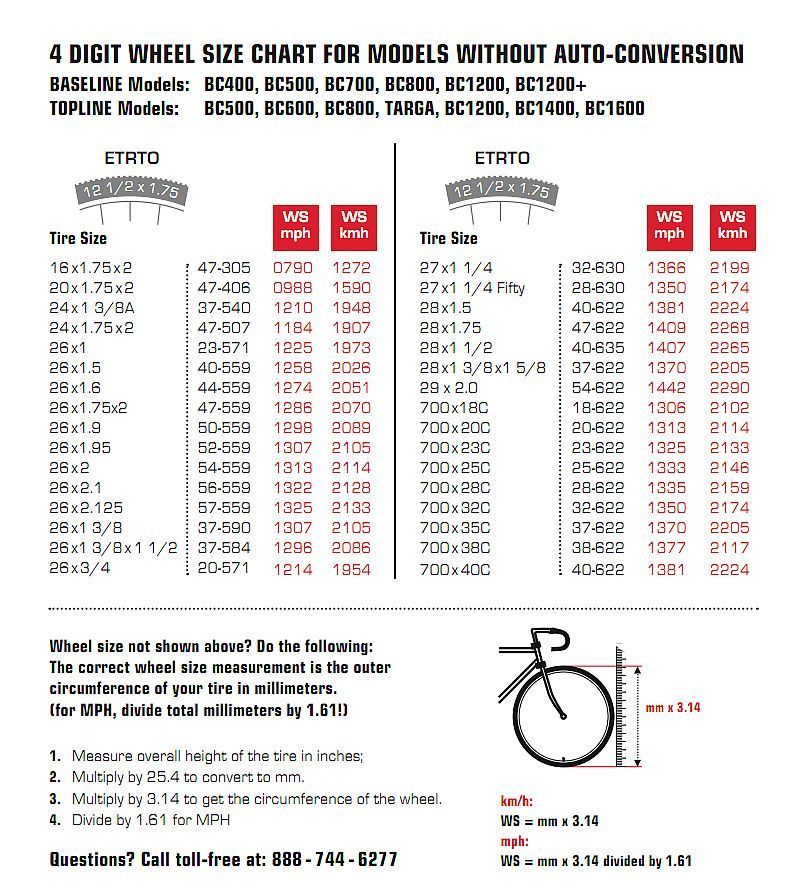 If it is a different size tire that came with the car new, that is likely the problem.
If it is a different size tire that came with the car new, that is likely the problem.
db4690
13
My guess is that whoever’s mounting the tires is utterly incompetent
db4690
14
@kezzie
Question . . . you haven’t by chance had your factory rims chromed, have you?
kezzie
15
Okay - you got me out in the dark, snow and cold - the tires are supposed to be 205-65-R15 94V.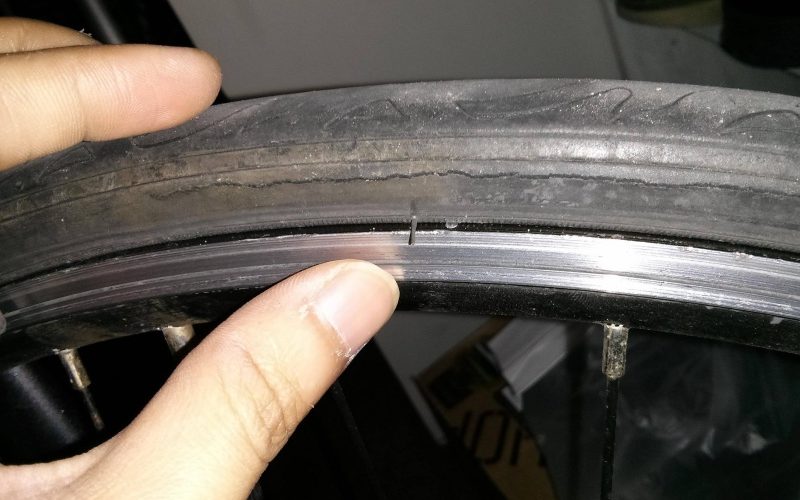 They are the same except they’re 94H. Do the H and V make a difference in tire size?
They are the same except they’re 94H. Do the H and V make a difference in tire size?
Also - car has about 150,000 miles on it, tires about 5,000 and no, never had them chrome plated.
NYBo
16
The size is the same. What’s different is the speed rating (H is lower than V). So that’s not the problem. Your tire guy is spreading a large load of male bovine droppings when he says this happens a lot. Get yourself a tire gauge AND a new tire shop.
Rod-Knox
17
Possibly the installer used a silicone lubricant to mount the tire.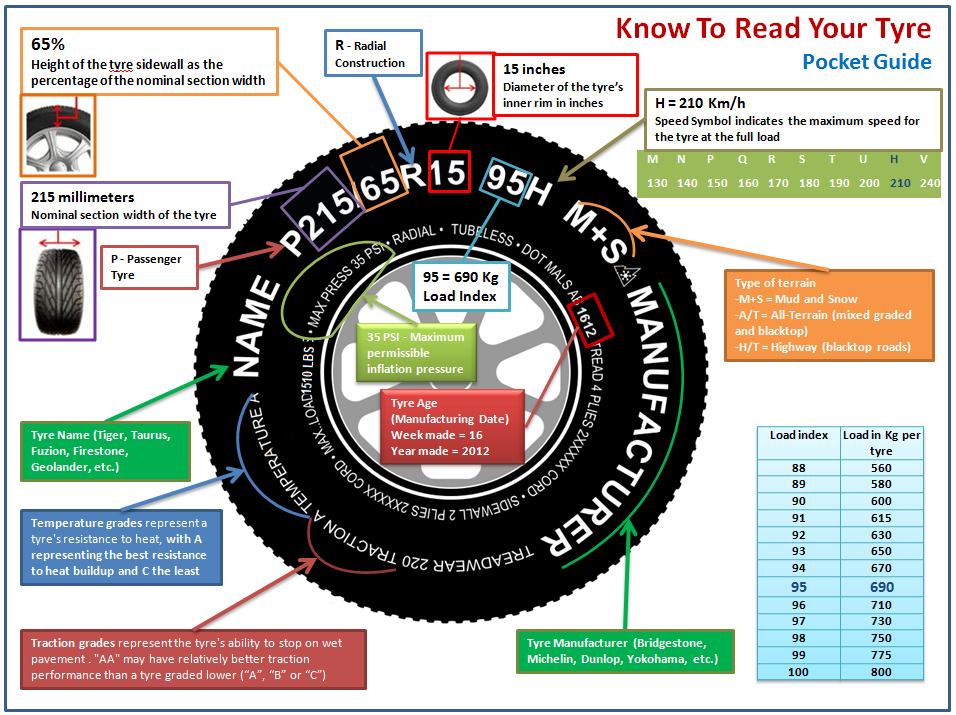 I seem to recall that silicone caused some problems similar to this several years ago.
I seem to recall that silicone caused some problems similar to this several years ago.
kezzie
18
Also - I haven’t been doing regular air pressure checks - although I’ll be doing them now. Is driving on a tire that’s inflated at 25 instead of 35 pounds a normal reason for the tires to pop off the rims?
ok4450
19
A tire should not roll of of the wheel rim while at 25 PSI unless you’re taking a 90 degree turn at 95 MPH and even then that’s not likely.
If tires rolling off of aluminum wheel rims is considered normal and common then the U. S. fatality count should be in the tens of millions along with the tens of millions of lawsuits filed over aluminum rims.
S. fatality count should be in the tens of millions along with the tens of millions of lawsuits filed over aluminum rims.
kezzie
20
You have all been very helpful. I’m sure he’ll say anybody who listens to Car Talk or has anything to do with them doesn’t know what they’re talking about. But then again, if what he’s saying is as crazy as it sounds like it is, he’s in another world anyway.
And no, I haven’t been taking many 90 degree turns at even 85 mph.
next page →
Introduction
The most common operational tire defects and how to deal with them
Protector distortion
Lump (hernia)
Crack on the side
Uneven wear
Dents on the tread
Cut and puncture
Tread delamination
Spot wear
Diagonal dent
Tread break
Conclusion
Tires, as the busiest and most vulnerable part of a car, are regularly subjected to enormous stress and wear in contact with the track surface.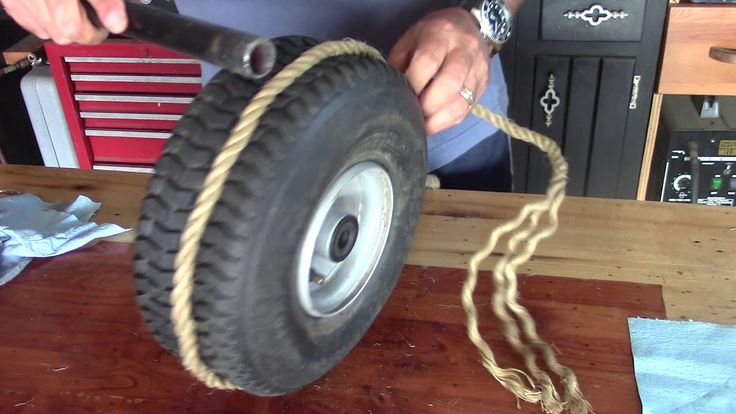 The number of defects and damages, both hidden and obvious, is incalculable. Most of them are caused by improper use of rubber, manufacturing errors or problems with adjacent parts. In the latter case, simply replacing the tires will definitely not solve the problem. We have compiled a short list of "popular" tire problems for cars and provided methods to fix them.
The number of defects and damages, both hidden and obvious, is incalculable. Most of them are caused by improper use of rubber, manufacturing errors or problems with adjacent parts. In the latter case, simply replacing the tires will definitely not solve the problem. We have compiled a short list of "popular" tire problems for cars and provided methods to fix them.
The surface is deformed with varying degrees of localization. Sometimes a defect in the operation of tires goes beyond their metal parts. This is caused by delamination of the inner layer due to either frequent overloads and shock loads, or corrosion of steel components. Moisture gets inside through microcracks, which causes this defect. This is an extremely serious damage, which does not imply either the further use of rubber or its elimination in tire fitting, since the internal parts of the structure are affected. All that remains is to put in a new one, and hand over the damaged one for recycling.
There are only two methods for preventing such damage: monitor pressure, avoid overloading, and regularly inspect tires for such defects. It may happen that such a tire is not the only one, and one of its neighbors has similar troubles in varying degrees of neglect.
A rounded bump may form on the sidewall or on the work surface. The most common cause of a defect in damage to the internal structure of the tire (cord) is the rupture of synthetic threads as a result of overheating at low pressure or due to severe shock loads (unsuccessful hitting a curb, an accident, fast driving over bumps). The problem is exacerbated if the tire is still over-inflated, as some drivers advise, which, they say, improves handling and helps reduce fuel consumption. This is true, but the reverse side of such “savings” is increased wear of rubber, i.e. as a result, the car owner will pay much more by correcting defects.
If the tubercle on the sidewall is practically invisible to the eye (up to 20 mm), then the malfunction can be eliminated in the tire center using a special patch, which will be placed from the back of the tread.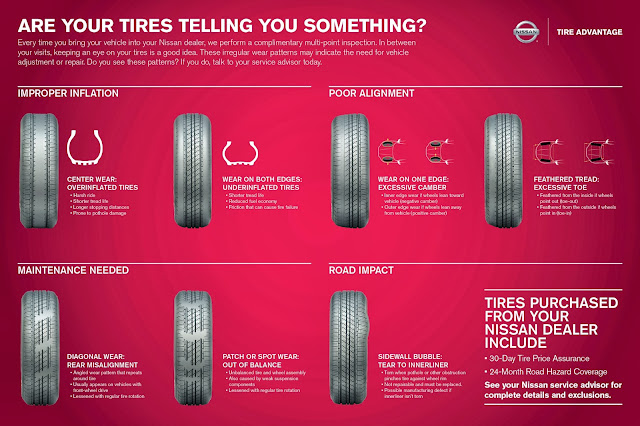 Additionally, you can straighten the disc, as it could bend after damage. But if the size of the hernia on the sidewall exceeds 15-20 mm, the tire will have to be replaced immediately, since the defect will only increase with each trip, which will eventually result in severe wear and tear on the go.
Additionally, you can straighten the disc, as it could bend after damage. But if the size of the hernia on the sidewall exceeds 15-20 mm, the tire will have to be replaced immediately, since the defect will only increase with each trip, which will eventually result in severe wear and tear on the go.
A dense network of cracks of various sizes appear on the sidewall of the tires. Such damage usually occurs in old tires, or those that have not been stored properly. High temperatures, humidity, direct sunlight, wear, positioning errors (for example, if they are simply piled on top of each other, which is prohibited for simple rubber without rims) lead to surface destruction and cracking of the sidewalls and the working area. These tires have a gray or greenish tint. If the crack runs along the rim of the wheel, then this directly indicates a lack of pressure.
Repairing an "aged" tire is not very smart, sometimes it's cheaper to buy a new one. Use or not - you can only judge by the depth of these cracks. If the sidewall damage is not too serious, then the tire can still be used for a couple more seasons, but it is still better to replace it soon, before the cracks get deeper.
Use or not - you can only judge by the depth of these cracks. If the sidewall damage is not too serious, then the tire can still be used for a couple more seasons, but it is still better to replace it soon, before the cracks get deeper.
The running surface wears unevenly in certain places, which quickly leads to failure of the entire tire, even if most of the tire does not have serious damage.
Divided into five types of defects:
Wear on one side. Rubber slides off the edge in an even layer without any bumps, abrasions and tears, while the center is relatively intact. Typically, such a defect is formed due to incorrect adjustment of the vertical angle of the wheel - camber, but it can also be caused by other problems with the suspension (wear of springs, hinges, suspension bushings, etc.). You can fix this technical problem only by contacting the tire center, where they will competently adjust the wheel alignment on a professional optical stand. This procedure is quite complicated, it is better not to do it yourself unless you are a technical specialist.
This procedure is quite complicated, it is better not to do it yourself unless you are a technical specialist.
Wear in the middle. Rubber wears out mainly in the central zone, since here the contact with the track is much stronger than on the sides. Because of this, traction is much worse. The main cause of uneven damage is over-inflation of tires, which often occurs if the driver does not control the pressure in cold weather or during sudden changes in temperature. Eliminating the defect is quite simple even with your own hands: you just need to adjust the pressure in all tires.
Side wear. The rubber wears off on the shoulder areas, giving them a more rounded shape. The cause of the defect is low pressure due to frequent trips in an overloaded state or shock loads. You can repair the damage in the same way as in the previous case: add pressure and adjust all wheels to the same level. To prevent this from happening again, you should avoid carrying heavy loads and drive more carefully.
Wavy wear. Damage in different places in the form of a spot or wave. Most often, this defect is typical for the rear axle of the car due to incorrect wheel geometry and suspension problems. Most likely, the alignment is broken, which can only be corrected in the tire center at a special alignment stand.
If the damage is not too severe and the depth of the grooves is more than 4 mm, then the tire can still be used successfully, provided that you have eliminated the cause of uneven wear (set the wheel alignment, eliminated excessive loads, adjusted the pressure, etc.).
On its surface there is a relief from a huge number of bumps and dents. This damage is due to serious problems with the suspension, which cannot cope with shock absorption, and as a result, most of the load falls on the wheels, which provokes additional wear. Even worse if the driver is used to driving over rough terrain. Ultimately, the load is distributed extremely unevenly, which gradually leads to such a defect.
Ultimately, the load is distributed extremely unevenly, which gradually leads to such a defect.
The only way to repair the damage is to go to a car service, where professionals will conduct a complete diagnosis of the suspension and identify the cause of tire wear (camber, shock absorbers, etc.). It is unlikely that they will help you in tire fitting, since it is already impossible to correct the shape of the tire.
The rubber has come apart in the working area or on the sidewall. If we exclude deliberate damage by an ill-wisher, then such damage, as a rule, occurs as a result of a collision with sharp objects (glass, nails, metal parts, etc.) or collisions. You can give the tire for repair, but if the depth of the “wound” of the sidewall reaches the carcass itself, then only a new tire will help.
Part of the tire is torn off due to damage to the internal structure. The reason for this defect is frequent overloads and low tire pressure. As a result, the rubber overheats, the metal insides are oxidized and the components are separated. It will not be possible to fix such technical problems in tire fitting, and the only way out here is a new tire. In the future, you should strictly adhere to the manufacturer's recommendations for the proper operation of rubber, monitor the level of wear.
As a result, the rubber overheats, the metal insides are oxidized and the components are separated. It will not be possible to fix such technical problems in tire fitting, and the only way out here is a new tire. In the future, you should strictly adhere to the manufacturer's recommendations for the proper operation of rubber, monitor the level of wear.
Indentation or damage in one place, usually accompanied by numerous nicks and tears at the edges. The most common cause of a defect is very sharp braking with simultaneous skidding. Vehicles without ABS are particularly susceptible to this type of damage because they do not have anti-skid protection. More dents can appear on cars that have been in one place for a long time. Also, the matter may be in the deplorable state of the brake system, which requires repair of the wheels. In the future, it is not recommended to use a damaged tire, as it will cause strong vibrations and shaking, not to mention increased wear.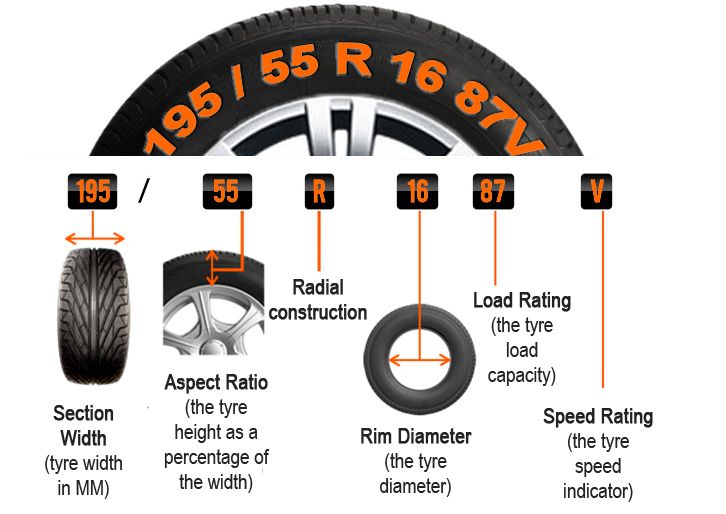
The dent runs along the work area, causing uneven wear. Such a defect is typical for rear axle tires in front-wheel drive vehicles that have incorrectly set camber angles. Or the reason is that the driver overloads the trunk too often, and all the weight is constantly pressing on the rear wheels, causing damage. It's unlikely to fix the dent.
There are tears and cracks on the blocks or on the side. This usually occurs among lovers of drifting and aggressive driving on winding and broken roads. This style of driving significantly reduces the service life, leads to numerous damage to the working area and heavy wear. Rubber will still serve if it does not have deep cracks, however, if you do not change your habits, then in the end the tire will simply explode on the go. In the future, uneven, grainy asphalt pavements should be avoided.
The most common cause of all defects is too much or too little pressure.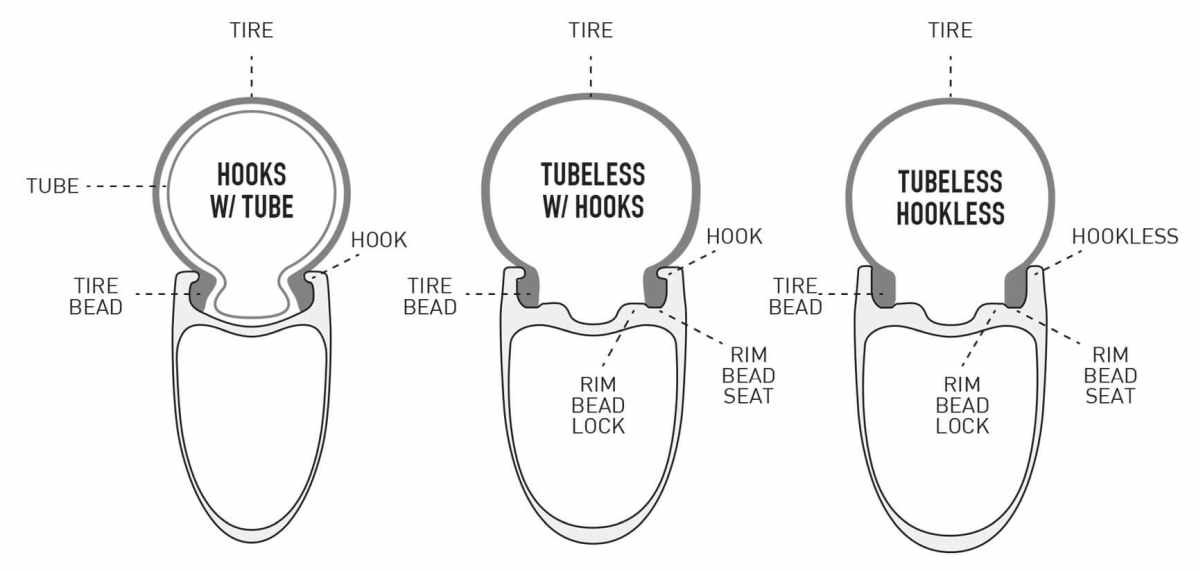 If the driver does not monitor the inflation of tires, then problems with wear are provided to him. Also, many car owners carelessly refer to the wheel alignment process, which is the only one that can help to avoid many defects.
If the driver does not monitor the inflation of tires, then problems with wear are provided to him. Also, many car owners carelessly refer to the wheel alignment process, which is the only one that can help to avoid many defects.
If you suspect uneven wear, BlackTyres can book an alignment procedure. Specialists work on a modern 3D-stand Hunter HawkEye Elite, they do everything quickly and competently. They can also fix cuts and punctures, straighten rims and adjust tire pressure.
If you need to replace a damaged wheel, go to the catalog - we have a wide selection of tires and wheels from the world's leading brands.
Most often we ourselves are to blame for the fact that the tires become unusable. But this can be avoided.
You have never seen such tires: even the police were surprised
In the process of using the tires, various damages can occur, most of which are the fault of the driver. As a result, rubber is wasted, and since the law prohibits the use of different tire models on the same axle, you have to spend money on replacing the second tire.
As a result, rubber is wasted, and since the law prohibits the use of different tire models on the same axle, you have to spend money on replacing the second tire.
The most common damage is puncture . This is the most harmless type of damage, but only if you notice it in time and repair it right away. It is absolutely impossible to drive on a flat tire, even a couple of meters! The damage caused by running on a flat tire or low pressure is catastrophic. This causes the sidewalls to deform more than they should, which is why the tire overheats, delaminates, and the carcass becomes unusable due to broken cords. As a result, the tire will have to be thrown out. In addition, the edge of the rim can also be damaged.
There are two types of punctures: with and without cord damage. To determine this, it is necessary to remove what pierced it. If the edges of the puncture tightly converge, then the cord is not damaged and it will be possible to repair the tire without removing it from the disk. Otherwise, if the edges do not converge, you will have to disassemble the wheel and make repairs to strengthen the frame from the inside. Alternatively, in the field and in the absence of a spare wheel, such a puncture can be repaired without removing the tire from the disk, after which you can carefully drive to a tire fitting or garage and make a full repair.
Otherwise, if the edges do not converge, you will have to disassemble the wheel and make repairs to strengthen the frame from the inside. Alternatively, in the field and in the absence of a spare wheel, such a puncture can be repaired without removing the tire from the disk, after which you can carefully drive to a tire fitting or garage and make a full repair.
Is it possible to inflate a wheel without a compressor - the experiment "Behind the wheel"
When repairing, the puncture site must be cleaned and marked. Further, it all depends on what kind of repair kit you have - as a rule, instructions are attached to them. There are sealants that are poured into the tire through the nipple, after which the wheel turns with the puncture down and the substance seals the hole. Repair with a tourniquet or insert is somewhat more complicated, but also more durable: the edges of the hole are polished with a special tool, after which the tourniquet treated with a special compound must be inserted into the tire through a puncture with a special awl, pulled out (not completely) out and cut flush with the surface.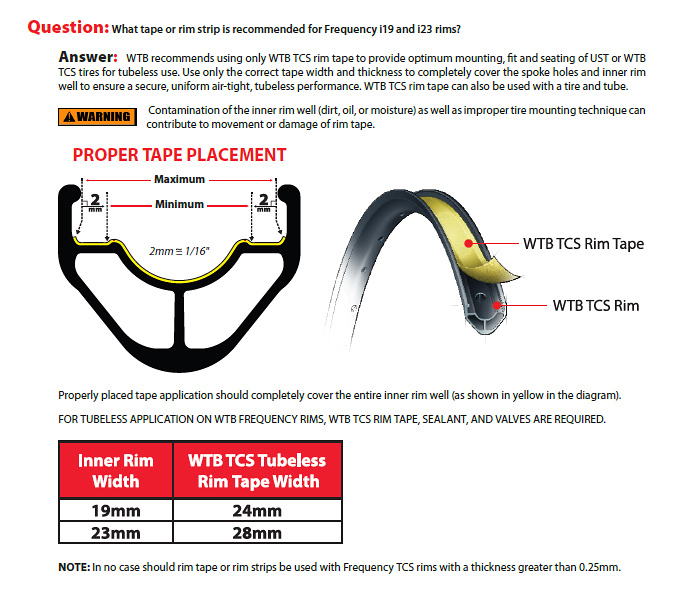
In case of cord damage due to a puncture, the tire must be removed from the rim in order to install a reinforced patch with additional cord on its inner surface. One of the sides of such patches has an adhesive layer that promotes cold vulcanization. After such a repair, wheel balancing will be required. To seal punctures from the inside, patches in the form of a mushroom are also used, with a leg that goes into the puncture. Such patches are also covered with a special adhesive composition for cold vulcanization.
Cuts or holes , unlike punctures, are not repairable, as they violate the integrity of the frame, which can no longer be strengthened. In addition, breakdowns are always sudden and occur on the go: the tire abruptly loses pressure and before the car comes to a complete stop it has time to make several turns "on the rims", which breaks the cord and destroys the layers. It is not recommended to use such a weakened tire, even if it was possible to repair and strengthen the rupture or cut, in the future.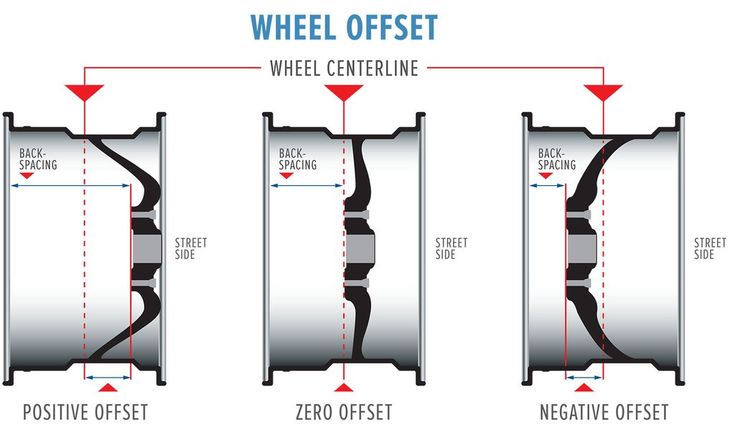
8 tire storage rules - do you follow everything?
Incorrect storage of tires may cause cracks . The danger of such damage is that moisture enters the cord through cracks, which renders the frame unusable. In addition, air can escape through cracks. Unfortunately, cracks are not repairable, and tires with them will not last long: sooner or later they will deform, become covered with swellings due to rusted and torn cord or because of driving with pressure below the recommended one.
Blisters or bulges can appear on a tire for a variety of reasons - it always happens due to a broken cord or delamination in the carcass. In the first case, an obstacle was hit and the impact broke the cord or the cord was cut through with a sharp object. In the second case, there is no damage on or near the hernia, which means that it appeared either due to a factory defect, or due to frequent driving with pressure below the recommended one. The danger of hernias is that they can explode at any time and provoke a skid, which will lead to an accident. If there is nothing to replace a tire with a hernia, then it is better to rearrange it to the rear axle and drive very carefully. Like fissures, a hernia cannot be repaired. Sometimes small blisters resulting from impacts or cuts are reinforced with reinforced patches, but there is no guarantee that the tire will not explode. Therefore, tires with hernias are recommended to be replaced immediately.
The danger of hernias is that they can explode at any time and provoke a skid, which will lead to an accident. If there is nothing to replace a tire with a hernia, then it is better to rearrange it to the rear axle and drive very carefully. Like fissures, a hernia cannot be repaired. Sometimes small blisters resulting from impacts or cuts are reinforced with reinforced patches, but there is no guarantee that the tire will not explode. Therefore, tires with hernias are recommended to be replaced immediately.
Tire blackening - 6 ways to polish your tires. Inexpensive!
Tire sidewalls can be damaged by rubbing against curbstones or the asphalt edge when driving onto the side of the road. If you are prone to such a driving style, then it is recommended to inspect the inner and outer sidewalls from time to time and, if abrasion is found, swap the wheels in order to prevent the cord from being exposed - the rubber thickness on the sidewalls is small (1. 5-3 mm), and it can be rubbed to the frame very quickly.
5-3 mm), and it can be rubbed to the frame very quickly.
Often the cause of tire damage can be poor-quality tire fitting , during which the bead ring was damaged. In this case, the tire loses its geometry and “sits” crookedly on the disk - it writes “eights” during rotation, and lateral vibration appears during the ride. It is impossible to repair such a tire - you need to replace it with a serviceable one as soon as possible, until it damages the suspension: traction, hubs and bearings.
You can find out whether you use tires correctly and what invisible damage they have received by the characteristic wear of the tread, the varieties of which are collected for convenience in the table:
Shoulder wear on both sides
Driving with less than recommended tire pressure.
Inflate the tires to the pressure recommended by the car manufacturer (a plate with recommendations is attached in the driver's door opening) and find the cause of the fall: puncture, cracks, hernia, nipple, rust on the rim of the disc where the tire fits, etc.